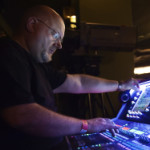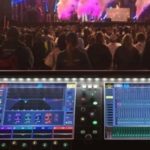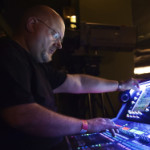Forums › Forums › iLive Forums › Archived iLive Discussions › Cisco 2960
- This topic has 8 replies, 4 voices, and was last updated 11 years, 11 months ago by
 Mr-B.
Mr-B.
-
AuthorPosts
-
2012/12/26 at 6:45 am #23499
jeffs7
ParticipantHi,
I am investigating purchasing a fixed iLive and I have a few questions about it.
According to the manual, I can send the ACE links through standard network switches, provided the traffic is VLAN separated. Has anybody tried using it with Cisco Catalyst 2960 switches? What additional latency would this switch impart per hop? (Again, the manual says 0.1ms per hop for ACE, but wouldn’t this be somewhat switch dependent?)
The manual also warns that it must link at 100Mbps and not 1000Mbps. Would the switch’s internal autonegotation be able to accomplish this or would I have to manually set the switch to 100/full duplex on the ports used for ACE?
Will a switch capable of POE interfere with or damage the ACE ports?
I have a non-network related question as well: where is the scene/show data stored and what goes on internally when you recall a scene?
Thanks for your help. This seems like it is overall a very good system.
~Jeff Stevens
~Jeff
2013/01/02 at 11:50 am #32563 ahjeffModerator
ahjeffModeratorHi Jeff
I can help you on a couple of these questions:
Any switch that has VLAN capability should work, but we have not tested that particular switch. Cisco being a well known brand, I would be surpised if you were to have a problem using it for this.
A PoE switch will not interfere with the ACE ports.
Cheers
– Jeff, A&H
2013/01/02 at 11:38 pm #32568 papromikeParticipant
papromikeParticipantYou should run it through a managed switch.
Run it a 10/100… Ace doesnt like gigabit.
Turn OFF broadcast storm protection
Turn OFF spanning tree protocolEnable DSCP/DIFFSERVE (in the QOS settings) and give the packets a high priority.
You should be good to go
Vice President of Sales
Allen & Heath USA2013/01/03 at 11:19 pm #32573jeffs7
Participantquote:
Originally posted by papromike
Run it a 10/100… Ace doesnt like gigabit.Turn OFF broadcast storm protection
Turn OFF spanning tree protocolThanks very much.
I guess I can test it myself now, but how does STP interfere with the audio? I am just trying to understand what is actually going on behind-the-scenes.
What effect will network switches have on the latency?
~Jeff
~Jeff
2013/01/04 at 9:23 am #32574 ahjeffModerator
ahjeffModeratorHi Jeff
With STP, the switch transmits packets. These will interfere with the audio.
The switch will have a minimal affect on latency. The exact latency introduced will of course depend on the switch. My estimate would be 5-6 samples maximum, but this is only an estimate. I did not answer this point in my first post, because I do not have any conrete figures.
Hope this helps
– Jeff, A&H
2013/01/04 at 10:32 am #32575 Mr-BParticipant
Mr-BParticipantHi Jeff (A&H) the point about STP is interesting, would that also affect the original Ethersound + control data type of setup.
The reason I ask is I use a Gigabit switch at either end of a lump of fibre to form the link between surface and rack, now I am sure it has Spanning Tree “on” which I believe allows me to have a CAT5 link in place simultaneously just in case some accident befalls the fibre.
I have run this system for quite some time without any issues (I think), I do limit the bandwidth available to each link to 100mb I seem to be able to disconnect either the CAT5 or the fibre (one at a time of course) without any perceptible loss of audio or control.
I admit I am not a networking genius so I sure could be making a mistake or I could just be confused.Thanks
Ian B.2013/01/05 at 12:32 am #32578jeffs7
Participantquote:
Originally posted by ahjeffWith STP, the switch transmits packets. These will interfere with the audio.
…
Hope this helpsThanks, that does help my understanding greatly! I wanted a little review on how STP works (I am CCNA), so I opened up the gigantic Cisco book and re-read the chapter on STP.
If I am correct in my understanding, the packets the switch transmits interfere with the audio because they cause a delay in forwarding. That is, when the switch is first powered on, it goes through and decides if there are any redundant links and disables them. Until that is finished (~50s), all frames are blocked. Then, if there is any change in the network, it will have to re-converge by repeating the procedure and taking another ~50s.
To prevent this, I can disable STP on that VLAN only and leave STP running on my data VLAN (for internet access, not control data)? Of course this relies on the assumption that I can use VLAN trunking between switches (my switches have 1G uplinks with QoS so bandwith should not be a problem).
I am glad to know about the latency – somebody told me that switches would add too much to be useful.
~Jeff
2013/01/05 at 12:37 am #32579jeffs7
Participantquote:
Originally posted by Mr BHi Jeff (A&H) the point about STP is interesting, would that also affect the original Ethersound + control data type of setup.
The reason I ask is I use a Gigabit switch at either end of a lump of fibre to form the link between surface and rack, now I am sure it has Spanning Tree “on” which I believe allows me to have a CAT5 link in place simultaneously just in case some accident befalls the fibre.
I have run this system for quite some time without any issues (I think), I do limit the bandwidth available to each link to 100mb I seem to be able to disconnect either the CAT5 or the fibre (one at a time of course) without any perceptible loss of audio or control.
I admit I am not a networking genius so I sure could be making a mistake or I could just be confused.Thanks
Ian B.Some switches have something Cisco calls an EtherChannel. What this does is to aggregate multiple links of the same speed running between the same switches as a singular link, with data running down both simultaneously. Then if one link suddenly drops out, the switches will immediately reallocate traffic between the remaining link(s). It sounds like this is what is happening because you say you can disconnect one or the other and have the audio continue uninterrupted.
~Jeff
2013/01/06 at 9:56 am #32583 Mr-BParticipant
Mr-BParticipantAh that all makes sense, I use the Level 1 Gigabit smart switches, they have been very reliable and had the added bonus of all connections on the back, as with all useful items this unit has been improved a superseded so all connections except power are on the front, ah progress.
Thanks Jeff. -
AuthorPosts
- The forum ‘Archived iLive Discussions’ is closed to new topics and replies.